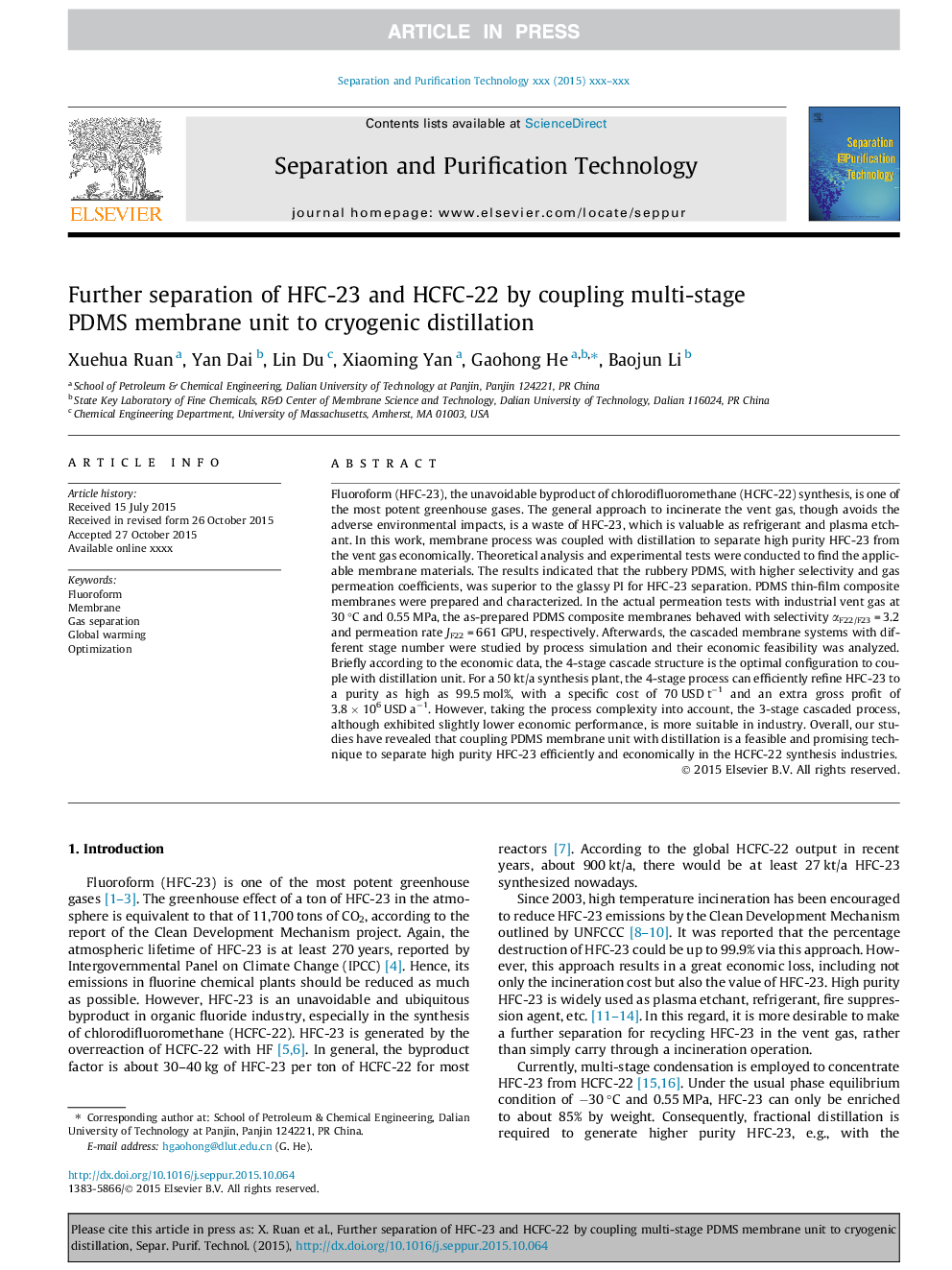| Article ID | Journal | Published Year | Pages | File Type |
|---|---|---|---|---|
| 10389731 | Separation and Purification Technology | 2015 | 10 Pages |
Abstract
Fluoroform (HFC-23), the unavoidable byproduct of chlorodifluoromethane (HCFC-22) synthesis, is one of the most potent greenhouse gases. The general approach to incinerate the vent gas, though avoids the adverse environmental impacts, is a waste of HFC-23, which is valuable as refrigerant and plasma etchant. In this work, membrane process was coupled with distillation to separate high purity HFC-23 from the vent gas economically. Theoretical analysis and experimental tests were conducted to find the applicable membrane materials. The results indicated that the rubbery PDMS, with higher selectivity and gas permeation coefficients, was superior to the glassy PI for HFC-23 separation. PDMS thin-film composite membranes were prepared and characterized. In the actual permeation tests with industrial vent gas at 30 °C and 0.55 MPa, the as-prepared PDMS composite membranes behaved with selectivity αF22/F23 = 3.2 and permeation rate JF22 = 661 GPU, respectively. Afterwards, the cascaded membrane systems with different stage number were studied by process simulation and their economic feasibility was analyzed. Briefly according to the economic data, the 4-stage cascade structure is the optimal configuration to couple with distillation unit. For a 50 kt/a synthesis plant, the 4-stage process can efficiently refine HFC-23 to a purity as high as 99.5 mol%, with a specific cost of 70 USD tâ1 and an extra gross profit of 3.8 Ã 106 USD aâ1. However, taking the process complexity into account, the 3-stage cascaded process, although exhibited slightly lower economic performance, is more suitable in industry. Overall, our studies have revealed that coupling PDMS membrane unit with distillation is a feasible and promising technique to separate high purity HFC-23 efficiently and economically in the HCFC-22 synthesis industries.
Related Topics
Physical Sciences and Engineering
Chemical Engineering
Filtration and Separation
Authors
Xuehua Ruan, Yan Dai, Lin Du, Xiaoming Yan, Gaohong He, Baojun Li,
